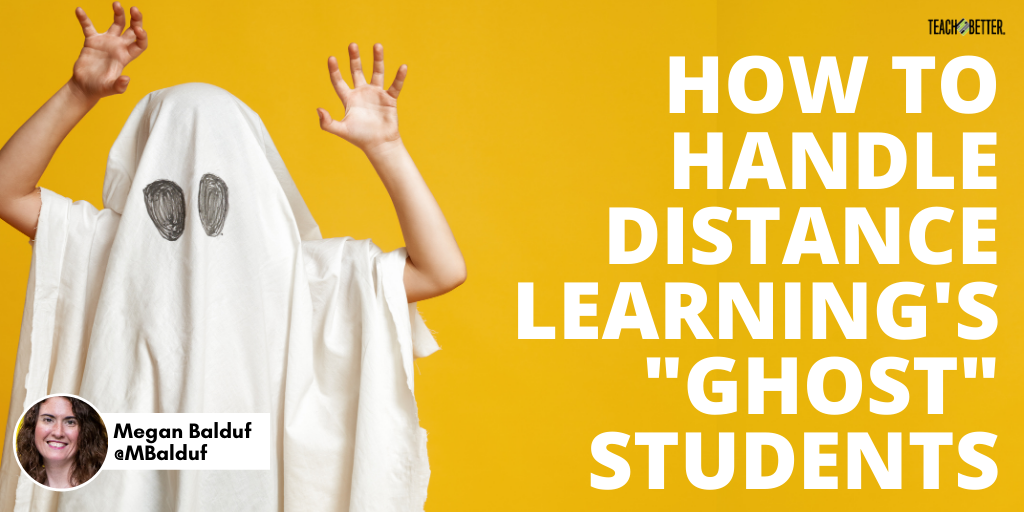TL;DR:
- We must acknowledge the concerns about student engagement and attendance that may occur during remote learning. We don’t know everyone’s situation so we must offer grace.
- According to a meta-analysis of psychiatric research, social isolation and loneliness during the pandemic negatively affect children’s levels of anxiety and depression.
- Listed below are ways to reach out to students. Use any means possible.
When the Pandemic Hit
When my school first transitioned to emergency remote learning in spring 2020, like other systems around the world, we scrambled to provide some sense of normal in a world turned upside down. After initial hiccups with technology access, platform crashes, and nearly four weeks since physical buildings closed, what we ended up with was minimal contact time.
Elementary school students, like my son, had one synchronous hour per day. Middle school students, my students, had one 45-minute synchronous session each week, but only with the “core” subjects: English, math, social studies, science, and world language. High school students didn’t fare much better; they had two 45-minute synchronous classes per week for each of their courses, “core” and elective.
An Immediate Concern About “Ghost” Students
We were all in crisis mode but it felt somewhat normal to be with our students. The uncharted territory that new programs posed and the system’s guidelines for their use amplified traditional concerns about student engagement. If students could not use the chat or video and could only use microphones one at a time, how could we get them to engage with us, the content, and their peers in these new virtual spaces the way they had been doing in the classroom? When we could not see them, could they not chat quietly at their desk? How were we going to reach those students we already worried about?
“Relationships before rigor. Grace before grades. Patience before programs. Love before lessons.” I pride myself on treating students equitably, so extending more grace while not knowing their situation was easy. Click To Tweet
During a planning meeting, a colleague, Jon, asked what we should do about students who signed in when class started but didn’t respond or produce anything during class and often weren’t even in the shared docs being posted. Some students needed to be removed from the synchronous session because they weren’t signing out. Were the students really on the other side of the screen? Were we being ghosted?

Photo by August de Richelieu from Pexels
Early Concern About “Ghost” Students
Jon raised this concern in late April after the system worked out the kinks in the recommended learning management platform. They ensured us that all students had access to the technology they needed. Though we only had three or four classes at this point, it was fairly clear who was and wasn’t tuning in. I feel some of that disconnect stemmed from our system’s decision to cease grading from when they shuttered the buildings.
During the emergency remote learning, the expectation was that students attend classes. However, they were not required to complete anything. Work submitted after March 13 was only to help bolster students’ grades. If it didn’t help, it didn’t count. Students with an A in March didn’t need to complete anything to maintain that A. It was the right decision in a pandemic but it made it easy for students to disengage.
My Own Experience
Yet by the time Jon voiced his concern, I also had ample opportunity to watch my first-grade son do exactly what Jon worried about. Day after day, I was my son’s guard. We shared a workspace. I spent nearly all of his synchronous time reminding him to pay attention, to put the book or art away, and not wander away from the screen.
Once or twice I overheard his teacher trying to get his attention and I cringed, knowing how frustrated I felt about the students who were seemingly ignoring my class. I know without my constant nagging, my son would surely have ghosted his first-grade teacher, so I could only imagine how families with older students were handling the situation.
Giving Grace
Before the pandemic, I spent considerable time on Twitter learning from other teachers. Shortly after the pandemic started, a lot of teachers posted Dr. Brad Johnson’s maxim: “Relationships before rigor. Grace before grades. Patience before programs. Love before lessons.” I pride myself on treating students equitably, so extending more grace while not knowing their situation was easy.
It seems harder to continue extending that grace now.
There are, if not large, certainly highly vocal sections of society clamoring for a return to normal. They wish to hold students and families accountable, and demand students to prove their presence by returning to in-person classes or requiring cameras on. Yet as tired as we are of this pandemic and as weary as we are by another video class, students still need grace.
[scroll down to keep reading]
A Story About “Ghost” Students
During a recent #mschat, Todd Bloch posed a question about how we deal with “ghost” students who do not attend class. One teacher, Melissa, shared a heartbreaking note she recently received from a former student. The girl ghosted classes last spring when the nation’s accountability was more lax because we were all just barely keeping our heads above water. Her student stopped attending class because her family enlisted her to be both babysitter and tutor to younger siblings navigating distance learning. The student also confessed that there was no quiet place at home where she could do her own work.
Pandemic’s Negative Impact
Nine months into this pandemic, we’re seeing the negative ways this is impacting our students. In October, the Psychiatric Times published a meta-analysis of psychiatric research done with and on children since the pandemic started. The author admitted that she needed more information. The pandemic is still too new to have the extensive research clinicians really need. The conclusions were nonetheless stark: the pandemic negatively affects children’s levels of anxiety and depression. Social isolation and loneliness now may have far-reaching consequences.

Photo by Julia M Cameron from Pexels
What to Do with “Ghost” Students
I’m no fan of compliance-driven teaching, but it’s especially problematic now. When teachers are entirely unable to see their students and cannot rely on their ability to see the problem for what it is, digging past the expressed behavior to find the root cause is critical. The first step in bringing that student back is to figure out why they ghost classes.
Use any means you can of reaching out:
- Send emails, texts, or phone the student.
- Send emails, texts, or phone the student’s adult.
- Use your learning management system’s chat feature.
- Enlist the help of other teachers to whom the student might be responding.
- Invite the student to one-on-one office hours or conferences.
And despite how tiring it is, don’t give up. In this setting, giving up means that ghost will haunt your class, forever insubstantial.
References
Wagner, Karen. “New Findings About Children’s Mental Health During COVID-19.” Psychiatric Times, 7 October 2020, www.psychiatrictimes.com/view/new-findings-children-mental-health-covid-19. Retrieved 25 November 2020.
About Megan Balduf
Megan Balduf is an English teacher with more than fifteen years’ experience at the middle school level. While being a classroom teacher had always been her dream, her reality allowed her to reach beyond the walls of her classroom. With the encouragement of administrators at her school in Fairfax, VA, Megan has grown through various leadership positions including mentor teacher and English department chair. As a model of lifelong learning, since entering the classroom, Megan has earned an MA in Gifted Education, an MA in English for Language Arts Teachers, and became a National Board Certified Teacher. In her spare time, she enjoys reading, running, and being Mom to her two children.



